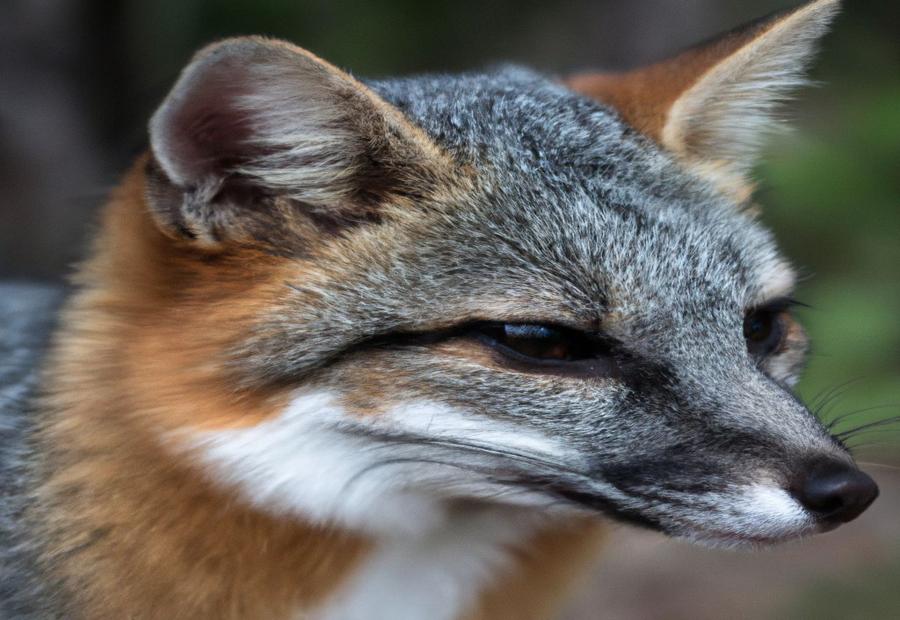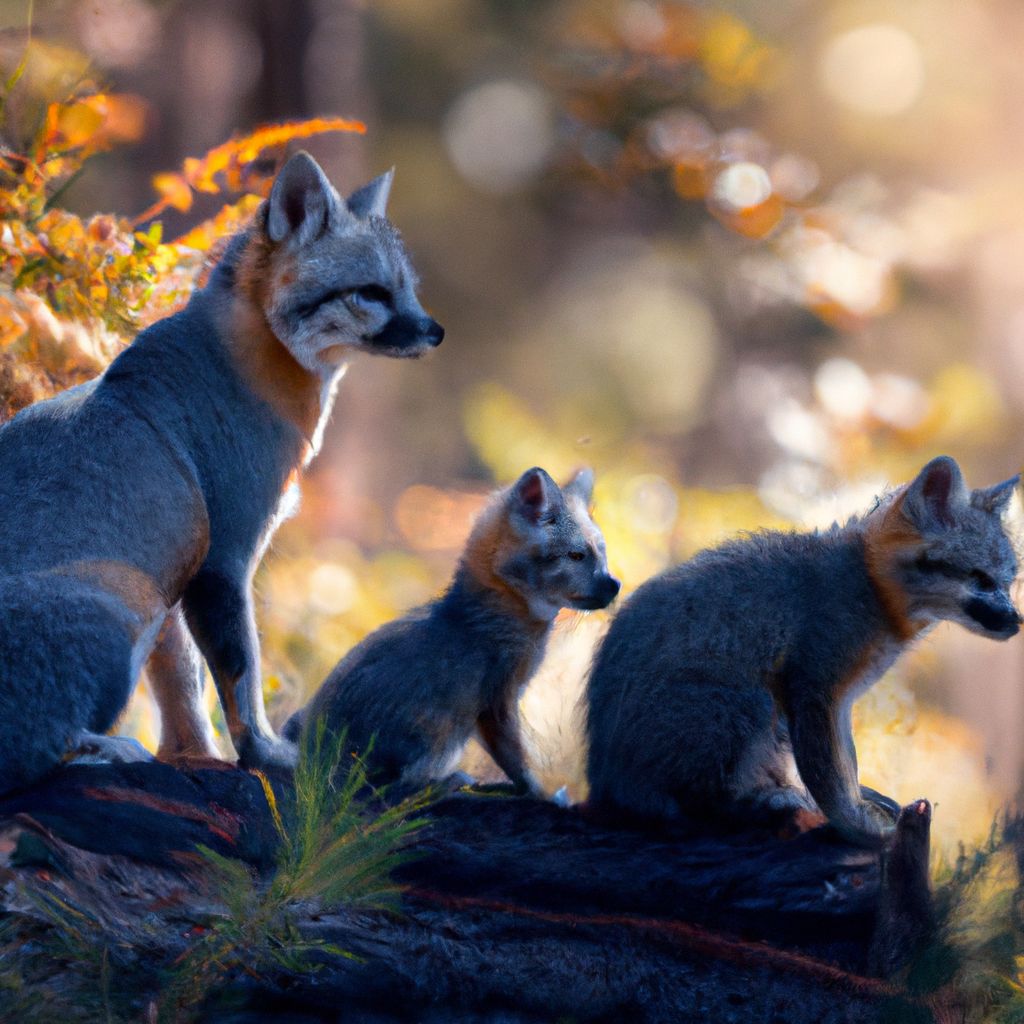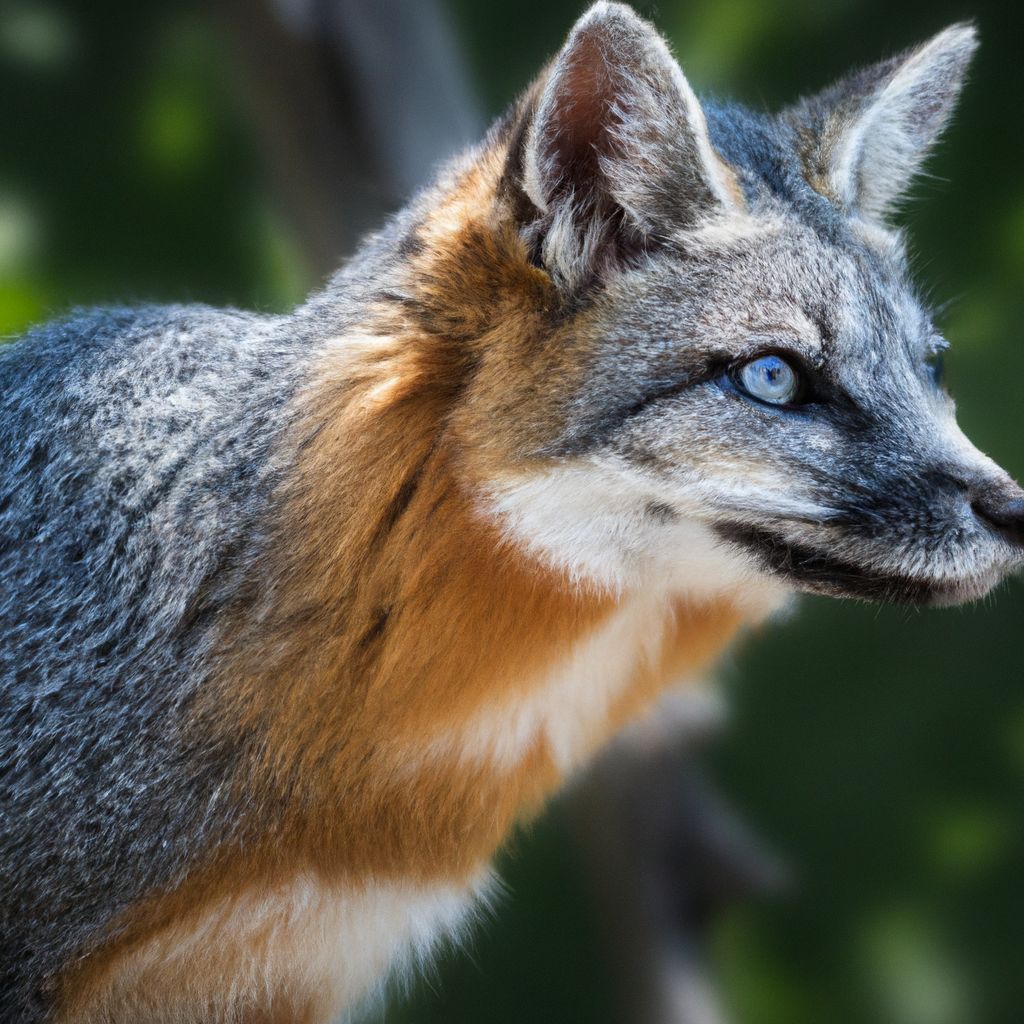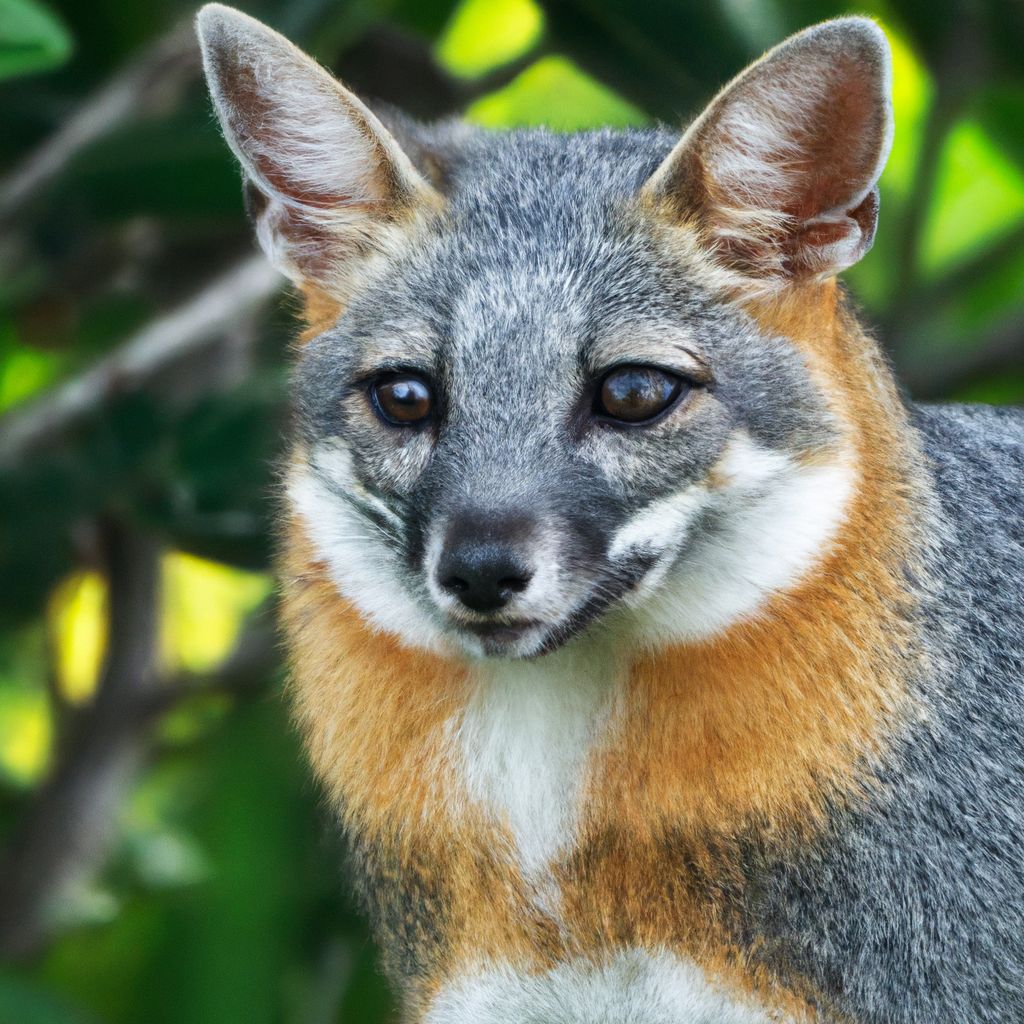The Gray Fox is a fascinating and important species in the realm of wildlife management. This article delves into the various aspects of the Gray Fox, including its habitat, distribution, behavior, and role in ecosystem balance. We will also explore the threats it faces and the conservation efforts being made to protect this species.
To kick things off, let’s begin with an introduction to the Gray Fox and its unique characteristics. Moving on, we will discuss in detail the preferred habitats of Gray Foxes and where they can be found geographically. Understanding the habitats and distribution is crucial in comprehending their ecological significance.
One primary focus of this article is the role of Gray Foxes in wildlife management. We will delve into their important contributions, such as prey regulation, maintaining ecosystem balance, controlling rodent populations, and their involvement in scavenging and the decomposition process.
We will explore the behavior and adaptations of Gray Foxes, including their nocturnal behavior, remarkable climbing abilities, and hunting techniques. These traits play a vital role in their survival and interaction within their environment.
Finally, we will address the threats faced by Gray Foxes, such as habitat loss and fragmentation, human-wildlife conflict, disease, and parasite pressure. We will also shed light on the various efforts being made for Gray Fox conservation, highlighting the importance of safeguarding this species for future generations.
By the end of this comprehensive article, readers will gain a detailed understanding of the role played by Gray Foxes in wildlife management, their behavior and adaptations, as well as the challenges they face in today’s changing world, making us all better equipped to appreciate and conserve this remarkable species.
##
Contents
Key takeaway:
- The Gray Fox plays a crucial role in wildlife management by regulating prey populations.
- Gray Foxes contribute to ecosystem balance by controlling rodent populations and aiding in the decomposition process through scavenging.
- Human-wildlife conflict and habitat loss pose significant threats to Gray Foxes, making conservation efforts essential.
The Habitat and Distribution of the Gray Fox
The habitat and distribution of the Gray Fox are determined by adaptability and resource availability. Gray Foxes are found in various habitats in North and Central America, including forests, woodlands, deserts, and urban areas.
Gray Foxes inhabit a wide range of territories, from southern Canada to Central America. Their distribution is influenced by climate, food availability, and competition with other predators.
The adaptability of the Gray Fox allows it to thrive in diverse environments. It is an omnivorous species, eating small mammals, birds, insects, fruits, and vegetables. This adaptability helps them survive in different habitats.
In forests, The Gray Fox use hollow trees or thick vegetation for dens, providing protection for themselves and their offspring. In urban areas, they seek refuge in abandoned buildings or under decks. Their ability to adapt to different habitats and find suitable den sites contributes to their distribution.
The population density of Gray Foxes varies depending on habitat conditions and food availability. Factors such as prey abundance and habitat fragmentation influence their distribution within specific regions.
Understanding the habitat and distribution of the Gray Fox is important for wildlife management and conservation. By knowing their range and preferred habitats, we can develop strategies to protect their populations and promote coexistence with human communities.
What Are the Preferred Habitats of Gray Foxes?
What Are the Preferred Habitats of Gray Foxes?
Gray foxes are known to prefer diverse habitats that encompass a range of terrains and vegetation. These habitats include forests, woodlands, grasslands, deserts, and even urban areas.
When it comes to forests, gray foxes gravitate towards areas that have dense vegetation, such as thickets and brushy areas. They construct their dens in tree hollows or other natural cavities. Woodlands, which offer a balance of trees and open spaces, also serve as suitable habitats for gray foxes because they provide cover and ample food sources.
Grasslands with tall grass or meadows are yet another preferred habitat for gray foxes. These areas offer protective cover for hunting prey, as well as an abundance of small mammals and insects that constitute the foxes’ diet.
While deserts and arid regions may not be their primary choice, gray foxes can indeed inhabit these areas. They actively seek out rocky areas and dens to evade extreme heat and find shelter.
Gray foxes have remarkably adapted to urban areas and can be found in neighborhoods and green spaces within cities. They effectively utilize human-made structures and landscaping to their advantage.
Preserving and safeguarding the preferred habitats of gray foxes is crucial for their survival. By ensuring the conservation of these natural environments, we can coexist harmoniously with these captivating creatures and appreciate the numerous benefits they bring to ecosystems.
Remember to maintain a respectful distance and honor their space when observing gray foxes in their preferred habitat. Let us all contribute to the preservation of their habitats for future generations to cherish and admire the beauty of nature.
Where Can Gray Foxes Be Found Geographically?
Gray foxes can be found throughout North America, including southern Canada and the northern regions of South America. They are commonly found in the United States, particularly in the eastern and central parts of the country. They also inhabit Mexico, Central America, Venezuela, and Colombia. Gray foxes thrive in various habitats such as forests, woodlands, deserts, and urban areas. They prefer areas with a mix of vegetation and open spaces, like brushy habitats and riparian zones. These foxes are usually found in areas with adequate cover, such as underbrush or rocky outcrops, which provide protection from predators and serve as shelter for denning. One unique trait of gray foxes is their ability to climb trees using their claws, which enables them to escape from predators or search for food in higher locations.
The Role of Gray Foxes in Wildlife Management

Photo Credits: Foxauthority.Com by Harold Clark
Gray foxes play a crucial role in wildlife management, impacting prey regulation, ecosystem balance, rodent populations, scavenging, and decomposition processes. These resourceful creatures are nature’s efficient regulators, ensuring a healthy and balanced environment. Join us as we delve into the fascinating world of gray foxes and uncover the remarkable contributions they make in wildlife management. Prepare to be amazed by the intricate web of interactions and the vital role these foxes play in maintaining the delicate harmony of our ecosystems.
Prey Regulation
Prey regulation is a crucial aspect of wildlife management, especially for gray foxes. These cunning animals specialize in hunting small mammals like rabbits, mice, and squirrels. Through controlling the population of these prey species, gray foxes contribute to maintaining balance in the ecosystem.
With their exceptional hunting skills, gray foxes employ stalking, pouncing, and chasing techniques when pursuing their prey. Their nocturnal behavior and climbing abilities give them an edge, enabling them to capture prey both on the ground and in trees.
When it comes to prey regulation, gray foxes have a significant impact. Research indicates that a single gray fox can devour up to 300 rodents within a year, effectively managing rodent populations that pose a threat to crops and property.
Aside from hunting small mammals, gray foxes also scavenge carrion, aiding in decomposition and nutrient recycling.
To illustrate the importance of gray foxes in prey regulation and wildlife management, let’s consider a scenario in a rural area. A farmer was facing issues with an overpopulation of rabbits that were causing damage to his crops. Seeking a solution, the farmer sought assistance from a wildlife management agency. The agency introduced a pair of gray foxes, and within a few months, these foxes successfully regulated the rabbit population, resulting in a significant reduction in crop damage. This real-life example showcases the vital role that gray foxes play in prey regulation and wildlife management within that specific region.
Impact on Ecosystem Balance
The gray fox plays a vital role in maintaining ecosystem balance by impacting prey populations, aiding in seed dispersal, contributing to accidental pollination, and scavenging for decomposition. Additionally, they indirectly influence the populations of other species and help distribute plant species while recycling nutrients. To preserve ecosystem balance, it is crucial to protect their habitats, support conservation efforts, and raise awareness about their importance. The remarkable aspect of these remarkable creatures lies in their significant impact on the ecosystem balance.
Control of Rodent Populations
Gray foxes play a vital role in controlling rodent populations, thereby contributing to wildlife management and the overall balance of the ecosystem. These skilled hunters are able to effectively track and capture rodents using their keen senses and agility. Employing hunting techniques like stalking and pouncing, gray foxes can catch rodents with remarkable precision. By preying on rodents, they naturally regulate their populations, preventing overgrowth and potential ecological imbalances. In areas with high rodent populations, gray foxes have a significant impact, capable of controlling up to 95% of the rodent population. This significantly contributes to a healthier ecosystem. Therefore, their efforts in controlling rodent populations not only benefit themselves but also have positive effects on other species in the ecosystem.
Scavenging and Decomposition Process
The Scavenging and Decomposition Process plays a crucial role in gray foxes’ role in wildlife management. These processes contribute to ecosystem balance and nutrient recycling.
Gray foxes engage in Scavenging and Decomposition Process by scavenging carrion and dead animals. This aids in the breakdown of organic matter and the recycling of nutrients into the environment.
By consuming carrion, gray foxes reduce leftover organic material, preventing potential disease vectors. They also indirectly control rodent populations by feeding on dead or predator-killed rodents.
Furthermore, gray foxes contribute to Scavenging and Decomposition Process through diggings, burying small animals, and storing food. This behavior disperses seeds and fertilizes the soil, promoting plant growth.
The Scavenging and Decomposition Process conducted by gray foxes is essential for ecosystem health. It maintains a balance by recycling nutrients, controlling populations, and contributing to the overall environment’s function.
Gray Fox Behavior and Adaptations
Gray foxes are fascinating creatures that have adapted incredibly well to their environment. In this section, we’ll dive into their behavior and adaptations, focusing on their nocturnal habits, impressive climbing abilities, and cunning hunting techniques. Prepare to be amazed by the remarkable ways in which gray foxes have mastered survival in the wild.
Nocturnal Behavior
Nocturnal behavior is of utmost importance for gray foxes. The gray foxes display several key characteristics related to their nocturnal behavior:
- Their primary activity occurs during the night, utilizing the cover of darkness to carry out their various activities.
- When it comes to hunting and foraging, gray foxes rely heavily on their exceptional hearing and night vision in order to locate their prey.
- Vocalizations play a significant role in the communication of gray foxes, particularly during their nocturnal activities.
- During the day, gray foxes seek shelter in either dens or vegetation, ensuring they rest and remain protected from potential predators.
- Gray foxes may opt to migrate at night, moving between different territories in order to secure both food and potential mates.
The nocturnal behavior exhibited by gray foxes enables them to not only thrive but also successfully engage in crucial activities such as hunting, foraging, communication, and finding appropriate shelter. Understanding these behaviors is vital for conservation efforts and the overall well-being of gray fox populations.
Climbing Abilities
The Gray Fox is renowned for its innate climbing abilities. It effortlessly scales trees using its sharp claws and flexible forelimbs. Unlike other fox species, the Gray Fox can descend trees headfirst, making it skilled at evading predators or reaching food sources. With its strong hind limbs, it can confidently leap from one branch to another, effortlessly covering significant distances. Climbing is not only a means of escape and accessing food, but it also provides essential protection and shelter in tree cavities or dense foliage.
In arboreal environments, the Gray Fox excels at navigating, swiftly and silently maneuvering through the treetops using its climbing prowess. Its movement and concealment techniques heavily rely on climbing in wooded habitats. Moreover, these climbing skills enhance its hunting prowess as it can effectively perch on branches and pounce on unsuspecting prey or launch surprise attacks from above. Additionally, the Gray Fox is not just a proficient climber; it is also a skilled terrestrial runner, capable of navigating diverse terrains.
The adaptability of the Gray Fox stems from its remarkable climbing abilities, allowing it to thrive in various environments ranging from dense forests to arid deserts. These climbing skills provide the Gray Fox with a distinct advantage in utilizing vertical spaces and aid in foraging, hunting, and evading predators. Its climbing abilities truly set it apart and contribute significantly to its survival strategies.
Hunting Techniques
Hunting Techniques
When it comes to hunting techniques, gray foxes have adaptations and strategies that make them successful predators. Here are the hunting techniques employed by these creatures:
– Stalking: Gray foxes silently stalk their prey, using their camouflage to blend into surroundings and get closer without alerting the prey.
– Pouncing: Once in close proximity, gray foxes pounce with incredible speed and accuracy, catching the prey off guard and increasing their chances of capture.
– Ambushing: Gray foxes hide and patiently wait for prey to come within striking distance, using keen senses like acute hearing and sharp vision to detect potential prey.
– Digging: Gray foxes dig into the ground to reach burrowing animals, like rodents, that may be hiding beneath the surface.
– Tree climbing: Gray foxes can climb trees, which allows them to access prey that seek refuge in elevated areas.
Pro-tip: Gray foxes are highly adaptable and resourceful hunters. To increase your chances of spotting them in the wild, look for signs of their presence, such as tracks or scat, near areas with abundant cover and food sources.
Threats and Conservation Status of Gray Foxes
The threats and conservation status of gray foxes are vital topics that demand attention. From habitat loss and fragmentation to human-wildlife conflict and disease pressures, these resilient creatures face numerous challenges. However, efforts for gray fox conservation are underway, aiming to safeguard their future. Buckle up as we embark on a journey into the world of these fascinating animals, exploring the threats they face and the ongoing conservation initiatives dedicated to their protection.
Habitat Loss and Fragmentation
Habitat loss and fragmentation pose a significant threat to the survival of gray foxes. The expanding urbanization and agricultural activities convert once lush forests and grasslands into bustling residential and commercial areas. Unfortunately, this conversion process leads to the unfortunate loss of suitable habitats for gray foxes. As a result, their access to essential resources such as food, shelter, and breeding grounds becomes severely restricted. Moreover, the fragmentation of these habitats further exacerbates the situation, isolating gray fox populations and disrupting their natural movement patterns. Consequently, gray foxes face significant challenges in accessing the necessary resources for their survival, and their gene flow is severely limited. This lack of genetic diversity not only diminishes their overall fitness but also greatly increases their susceptibility to various diseases and threats.
It is essential to recognize that the consequences of habitat loss and fragmentation extend far beyond the fate of gray fox populations. These factors also disrupt the delicate balance between predators and prey, thereby affecting the dynamics of the entire ecosystem and reducing overall biodiversity. Such disruptions can have severe repercussions on the overall health and stability of the ecosystem.
Therefore, taking effective measures to mitigate habitat loss and fragmentation is of paramount importance in conserving gray fox populations. This requires a multifaceted approach, including the preservation and restoration of habitats that are suitable for gray foxes, the development of wildlife corridors to connect fragmented areas, and the implementation of land-use policies that prioritize conservation efforts. By addressing these critical issues, we can ensure the survival of gray foxes and safeguard the integrity of their habitats for generations to come.
Human-Wildlife Conflict
Human-wildlife conflict is a significant issue for gray fox conservation. This conflict occurs when humans and gray foxes interact, leading to negative outcomes for both parties. Such conflicts arise due to various factors, including the destruction of crops and livestock.
Gray foxes, as predators, often prey on small mammals like chickens and rabbits, causing economic losses for farmers and giving rise to conflicts between them and the foxes. In addition, gray foxes can also cause property damage by digging burrows or raiding garbage cans, which frustrates homeowners and further escalates conflicts.
Another concern related to human-wildlife conflict involving gray foxes is the transmission of diseases. Gray foxes, like rabies carriers, pose risks to humans and domestic animals. This not only increases concerns about public health but also adds to the potential for conflicts. Additionally, limited resources further exacerbate the conflicts. As human populations expand and encroach into natural habitats, gray foxes face competition for food and shelter. In their search for resources, conflicts often arise as they find themselves in urban areas.
Efforts to address these human-wildlife conflicts involving gray foxes entail a range of strategies. These include securing livestock enclosures to mitigate the destruction caused by foxes, using deterrents to keep foxes away from residential areas, and promoting coexistence through education and awareness programs. By implementing these measures, we can minimize the negative impacts of human-wildlife conflict and ensure the conservation of gray fox populations.
Disease and Parasite Pressure
Disease and parasite pressure pose significant concerns for gray foxes.
These animals can be vulnerable to various health issues, including mange, tick-borne diseases, and parasitic infections.
Mange, caused by mites, is a highly contagious skin disease that can weaken gray foxes and make them more susceptible to other health problems.
Tick-borne diseases, like Lyme disease, can result in symptoms such as fever and joint pain.
Additionally, parasitic infections, such as roundworms and tapeworms, can negatively affect the digestive system, leading to weight loss and weakness.
The overall health and population of gray foxes can be heavily impacted by these health challenges.
Research has revealed that disease and parasite pressure can cause reduced survival rates and reproductive success in gray fox populations. For a detailed look at its role in wildlife management, you can visit this resource.
To ensure the long-term conservation of gray foxes, it is crucial to monitor and manage these health concerns effectively.
Efforts for Gray Fox Conservation
Efforts for Gray Fox Conservation
1. Creating protected habitats: Gray fox conservation involves establishing protected areas where the foxes can thrive undisturbed by human activities.
2. Restoring and enhancing habitats: Conservation initiatives focus on restoring and enhancing gray fox natural habitats. This includes reforestation, removing invasive species, and creating suitable vegetation.
3. Conservation education and awareness: Spreading awareness about the importance of gray fox conservation is crucial. Education programs inform the public about the foxes’ ecological role and the threats they face. It is important to have a detailed look at the relationship between the Gray Fox and Humans.
4. Collaboration with landowners and stakeholders: Conservation efforts involve working with landowners and stakeholders to ensure responsible land management practices that protect gray fox habitats. Collaboration with farmers, ranchers, and other land users promotes coexistence and minimizes conflicts.
5. Monitoring and research: Regular monitoring and research provide valuable information on gray fox populations, behavior, and response to conservation efforts. This data helps assess the effectiveness of strategies and inform future conservation actions.
6. Addressing human-wildlife conflict: Efforts are made to mitigate conflicts between humans and gray foxes by implementing strategies such as providing alternative food sources, securing livestock enclosures, and promoting non-lethal deterrents.
7. Collaborating with local communities: Engaging local communities in gray fox conservation initiatives fosters stewardship and encourages their active participation in protecting these animals.
8. Policy and legislation: Advocating for policies and legislation that support gray fox conservation is essential. These measures can help regulate hunting, protect critical habitats, and enforce penalties for illegal activities that harm these foxes.
9. Supporting captive breeding and reintroduction programs: In certain cases, captive breeding and reintroduction programs are implemented to boost gray fox populations in areas where they have been severely depleted. These programs aim to restore balance to ecosystems and increase genetic diversity.
10. Collaborating with international partners: Cooperation with international organizations and agencies allows for the exchange of knowledge and resources, leading to more effective conservation strategies across borders.
Frequently Asked Questions
1. What are the distinctive characteristics of the gray fox?
The gray fox (Urocyon cinereoargenteus) has a grizzled gray coat with reddish coloration on its legs and neck. It has a black stripe down the top of its tail and two black lines on its muzzle. Unlike red foxes, gray foxes have partially retractable claws and can climb trees. They also have gray and reddish-brown backs of ears.
2. Where are gray foxes native to?
Gray foxes are native to Indiana and can be found in all counties with suitable habitat. However, they are more commonly found in the forested south-central hills region.
3. How do gray foxes differ from red foxes?
Gray foxes are closely related to red foxes, but they have distinct differences. Gray foxes have a grizzled gray coat, while red foxes have a red/orange appearance. Gray foxes also have a black stripe down their tail, whereas red foxes have a white tip on their tail. Additionally, gray foxes have two black lines on their muzzle and can climb trees.
4. What is the diet of gray foxes?
Gray foxes have a varied diet that includes mammals, birds, insects, and plants. In Indiana, their winter diet consists of nuts, seeds, fruit, vegetation, rabbits, mice, and birds. Their summer diet is likely similar but includes more fruit and insects. They also scavenge for food.
5. Where can gray foxes be seen in Indiana?
Gray foxes are most commonly seen in southern Indiana counties like Perry, Crawford, and Harrison. They can occasionally venture out from brushy areas into fields in the evenings to search for food. Harrison-Crawford State Forest and Patoka Lake are public lands where sightings are possible, especially during night drives or camping.
6. How do gray foxes reproduce and raise their young?
Gray foxes mate in January and give birth to three to five pups in March or April. They may use underground dens, hollow trees, logs, or burrows hidden in rock outcroppings to raise their young. The male assists the female in hunting and bringing food to the pups. The family group breaks up in early fall when the young have learned to hunt.


